After months, or most likely years of stress, fatigue, frustration, and hopefully joy in between, you’ve finally finished your manuscript and now trying to figure out how to get your masterpiece in the hands of your readers so they too can enjoy the fruits of your labour as well as put some moolah in your pockets.
What better time to understand what your publishing options are? There are two routes to do this: 1) self-publishing, and 2) traditional publishing.
What is self-publishing?
It is the process of publishing your book yourself using a number of resources and platforms. This means that you will be responsible for all the success, failures, and costs of the process, ranging from getting an editor, designing a book cover, figuring out which distribution channels to sell through, formatting your book, and even coming up with the copyright pages. It doesn’t mean you have to do everything yourself as you can hire people to do it but no one will be looking over your shoulders to ensure you’re doing everything right.
What is traditional publishing?
It is the process of getting a literary agent, who will then pitch your manuscripts to publishers, which will then sell and promote your book. The agent is an important person as he / she will represent you to the publishers and be responsible for negotiating how much you get paid from the book deal. Most publishers will not even consider your manuscript if it doesn’t come through a literary agent.
What are the differences between self-publishing and traditional publishing?
The table below show the key differences between the two. Where appropriate, I’ve used Amazon as a representative for self-publishing given they represent the largest self-publishing platform to simplify the comparison.
| Criteria | Self Publishing | Traditional Publishing | |
|---|---|---|---|
| 1 | Personal involvement | You are responsible for every aspect of taking your book to market. This means you have to be the jack of all trades and have a broad range of skills (not just writing!) or hire people to help with aspects of your book launch, such as hiring editors, designing a book cover, marketing, or building an author platform such as a website, YouTube channel, blog, social media. This means more upfront cost to you. | The publisher will assist with many aspects with the launch of your book such as partnering editors to you, designing your book cover, formatting your book, etc. The level of assistance with other aspects of your book’s launch such as marketing and building your author platform will depend on how high profile you are. In any event, publishers will rely on you to also participant in marketing yourself and your book. Overall, this option results in less upfront cost to you however this is also the reason why you will receive a lower royalty percentage. Everyone needs to get their cut as well! |
| 2 | Royalties | With Amazon, the largest self-publishing platform, you can earn up to 70% royalties provided that you price your book between USD2.99 – USD9.99. Royalty payments from Amazon occurs 60 days after the end of the month in which your royalties met the threshold. Payment will take 90 days if you opt for expanded distribution for paperbacks. Amazon’s expanded distribution avails your book to more online retailers, bookstores, and distributors. | On average, you can expect around 10-12% royalties for physical books and about 25%+ for eBooks. However, in addition to royalties, traditional publishers also offer an advance, which is not available when you self-publish. An advance is an upfront payment from the publisher to the author, and is paid against any future royalties. This means if you receive an advance of USD5,000, you will need to sell USD5,000 worth of your books before you will earn royalties (known as “earning out”). While we often hear about multi-million dollar advances, this is often for established and / or high profile authors. For newbie writers, an advance of around USD5,000 – USD10,000 is more realistic. Royalties are paid to the author on a set schedule, usually every 6 months. |
| 3 | Querying | No querying as you will be publishing it yourself. | • Need to query agents (15% commission) • If agents pick up your book, they will then submit your book to publishers |
| 4 | Control | You get the say in your story. If you like or dislike something, it’s your call. While there is no one who will look over your shoulders to check up on everything you do, you are also ultimately responsible for the success or failure of your book launch. | The publisher has a significant say in your story. They will be able to change any aspect of your story including chapter, scene, character. Of course, you don’t have to agree with them but if you don’t, they may not publish your book. |
| 5 | Distribution | Amazon offers eBooks and paperback, which makes your book available for purchase via its platform. With its expanded distribution option, your book can also be available to a wider selection of online retailers, bookstores, and distributors. There are other print-on-demand services such as those offered by IngramSpark, which can distribute your book to its 40,000 partner retailers and libraries across the world. | Publishers have relationships with bookstores, libraries, and schools, and therefore can negotiate to have your book stocked at these places. Bigger publishers have global relationships which will promote your book. However, most books are only stocked by bookstores for about 6 to 8 weeks before being replaced with newer books. |
| 6 | Rights ownership | You own the rights, therefore you can sell anywhere you want (e.g., foreign rights) and in whatever format you want, including audio books, TV, gaming, etc. | The publisher owns the rights to your book. This means they can sell (or not) in any place they want. For example, they may hold the right to publish your book in Australia but choose not to. You may immediately think that you can self-publish in Australia to capitalise on the opportunity but you will not be permitted as the publisher owns the rights. |
| 7 | Boasting rights | There is a perceived lack of legitimacy given that anyone with a laptop can self-publish. | A publisher’s brand may increase the perceived legitimacy of your book, not least due to their team of professionals who ensure your story is of the highest quality possible. |
| 8 | Publishing timeline | Amazon publish English eBook titles with 12 hours and non-English titles around 48 hours. | Publishers take an average of 18 – 24 months to get to a book published. |
| 9 | Literary awards | Not to say it won’t happen but it is generally more difficult to win awards when self-publishing. | Traditionally published stories have a better chance of winning literary awards due to the connection publishers often have with the award organisation, and the publicity it can generate. |
To self-publish or traditionally publish, that is the question.
There is no right or wrong answer, and it will depend on what you’re looking for. Think about the list above and weigh up the options that suit your needs. Fortunately, however, it’s not an either / or decision. You may become a hybrid author. Some authors have pursued traditional publisher at their beginning of their writing career and switched to self-publishing when they’ve established a viable platform.
Conversely, you may choose to self-publish at the beginning and when you’ve established a good sales record and / or built an enviable author platform, you can use these as leverage when querying a literary agent for a traditionally publishing deal.




